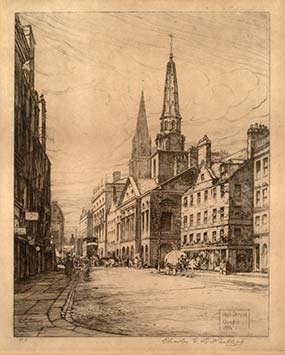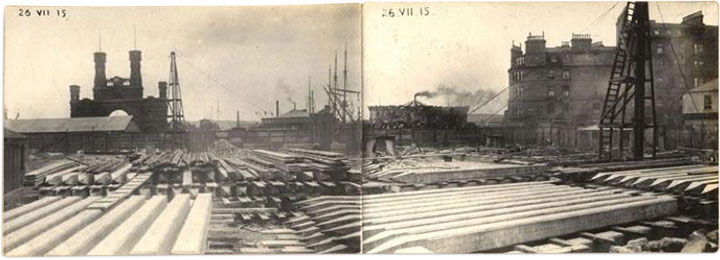Great War Dundee
This is Dundee's story of those that served in the First World War, and of the people left at home
The Home Front

At the time the Great War started, Dundee had a population of 175,000. The city centre was densely packed with slum housing, but in April, businessman James Caird announced the gift of £100,000 to clear the worst of the slums and create a new City Hall – one of many schemes delayed by the war.
The jute industry was in gradual decline and industrial unrest was considerable, but two-thirds of the city’s workforce was still employed in the textile industry. Low wages and a reliance on female workers created considerable social problems – infant mortality was the highest in Scotland.
The great event of 1914 was the Royal Visit – on 10 July His Majesty King George V, Queen Mary and their daughter, Princess Mary made an official visit to the city, the first by a reigning monarch in 70 years. Huge numbers turned out to welcome the Royal Family, who visited the factories of Keiller & Son, Baxter Brothers and Ashton Works. The King also laid the foundation stone of what would eventually become Caird Hall. The day was considered a triumph for Dundee.
And then war..
Just four weeks after the Royal Visit the life of every person in the city was transformed as the most horrendous war anyone had ever known began.
The onset of war in 1914 brought many changes and difficulties for many in and around Dundee. The average weekly wage was just £1.50 as the war began. Life expectancy was 54 for women and 50 for men, Just 6% of children were still at school at 16, and one in 20 people still wanted to leave the country in search of a better life.
During World War One 75% of the UK’s butter, eggs and cheese came from overseas. Prices soared, hurting working class families in particular, and panic buying took place. By 1917 all pubs had to close by 7pm.
In 1917 the Government introduced rationing to ease the effects of the German submarine campaign. Everyone was issued with ration cards, later ration books, and allowed 15oz of meat, 5oz of bacon and 4oz of butter or margarine per week.
People expected, and prepared for, an invasion. Hysteria was fuelled by stories that the country was full of German spies. The Defence of the Realm Act prevented national newspapers from publishing articles which revealed sensitive information. However Dundonians were always well informed. DC Thomson journalists who enlisted as Fighter-Writers wrote articles about their experiences which were published in the local papers.

Dundee landmark delayed by war
In an elaborate event King George V and Queen Mary laid the foundation stone of the Caird Hall in 1914 by electric press button control from Caird’s Ashton Works in the Hawkhill. The electric buttons were formed from large pieces of Emerald and Jade. The Emerald, of 271 carats in weight, and one of the largest in the world, was presented as a gift to the king. The gem was handed back and later became incorporated into the Lord Provost’s Chain of Office.
Soon after the foundation stone had been laid, building work come to a halt because of the First World War, and it was not until 1923 that work was finally completed and officially opened on 26th October 1923 by The Prince of Wales.
Picture Credits: High Street, Dundee... courtesy of University of Dundee Museum Services. Caird Hall construction... courtesy of Dundee City Council.
